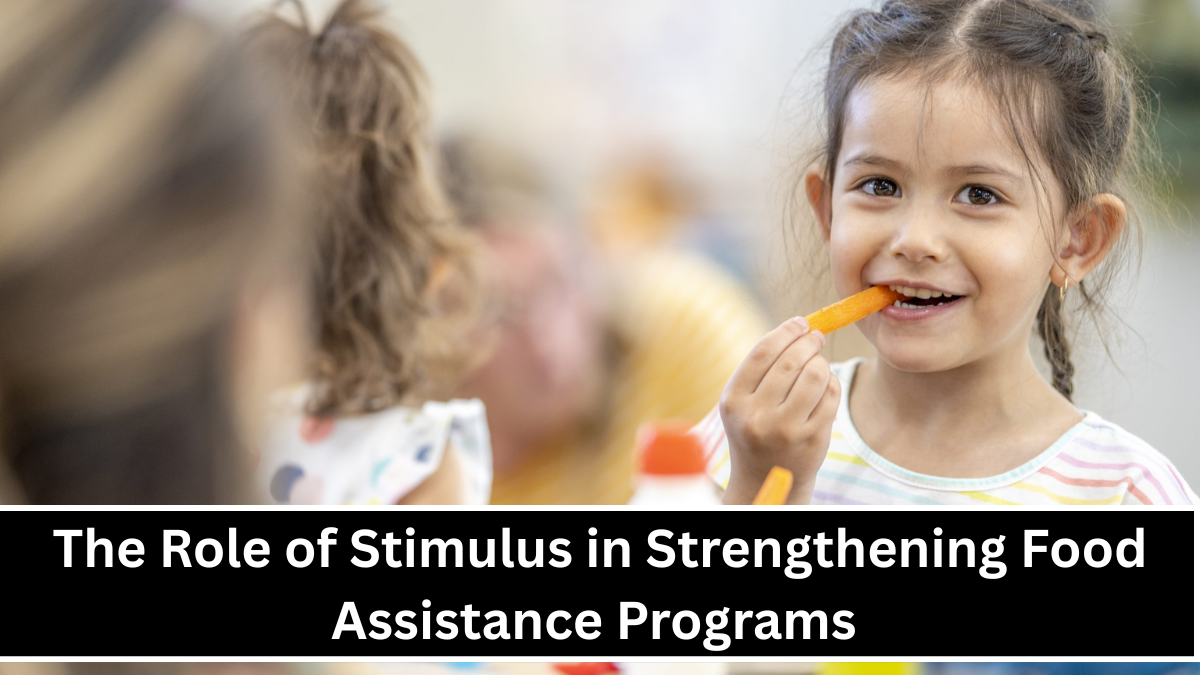In times of crisis—like the COVID-19 pandemic or economic recessions—millions of people struggle to afford basic needs, especially food. During such hard times, food assistance programs become a lifeline for families. One of the most powerful tools governments use to support these programs is a stimulus package. A stimulus is a financial boost, often provided by the federal government, meant to support the economy and help people directly. In the U.S., stimulus bills have not only offered checks to individuals but also strengthened food assistance programs like SNAP (Supplemental Nutrition Assistance Program), school meal programs, and food banks. Let’s understand how stimulus funding plays a key role in keeping people fed during difficult times.
How Stimulus Strengthens Food Assistance Programs
When a government issues a stimulus, it usually includes extra funding for programs that support low-income households. In the United States, one of the most important programs is SNAP (also known as food stamps). A stimulus can help increase SNAP benefits, extend eligibility, and remove waiting times so more people can access food quickly. During the COVID-19 pandemic, stimulus packages such as the CARES Act (2020) and the American Rescue Plan (2021) increased the monthly SNAP benefits for millions of Americans. This allowed families to buy healthier food and reduced food insecurity in both urban and rural communities.
Stimulus money has also helped school meal programs, especially when schools were closed. Extra funds allowed schools to offer free grab-and-go meals to children, even during summer vacations. Without the stimulus, many kids might have gone hungry when they weren’t in school.
Stimulus packages do more than just give people direct payments—they help build a stronger safety net by supporting food programs that protect millions from hunger. Whether through increasing SNAP benefits, helping schools serve meals, or funding food banks, the stimulus has played a major role in reducing food insecurity during tough times. Investing in food assistance is not just good for struggling families—it’s good for the health of the entire nation. With proper planning and funding, stimulus programs can continue to be a powerful tool for ensuring no one goes hungry.
FAQ’s:
Q1. What is a stimulus package?
A1. A stimulus package is a set of financial measures introduced by the government to boost the economy during a crisis. It often includes cash payments to people and increased funding for public programs like food assistance.
Q2. How does stimulus money help food assistance programs?
A2. It helps by increasing the amount of benefits for programs like SNAP, supporting school meal programs, funding food banks, and improving access to food for low-income families.
Q3. Which food assistance programs received support during COVID-19 stimulus efforts?
A3. Programs like SNAP, school meals, WIC (Women, Infants, and Children), and food banks received extra funding from stimulus bills like the CARES Act and the American Rescue Plan.
Q4. Did stimulus help improve long-term access to food?
A4. Yes, in some cases. For example, it helped expand online grocery purchasing for SNAP users and led to discussions about making higher benefit levels permanent.
